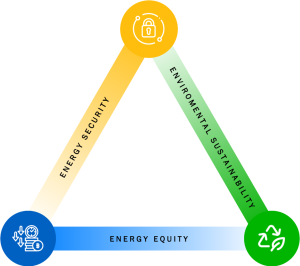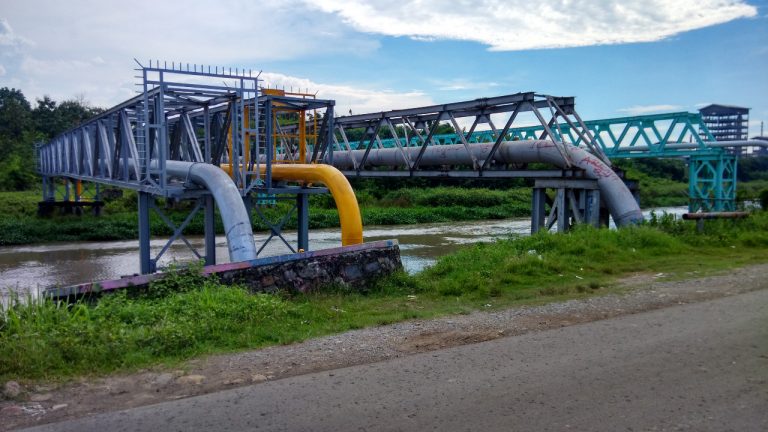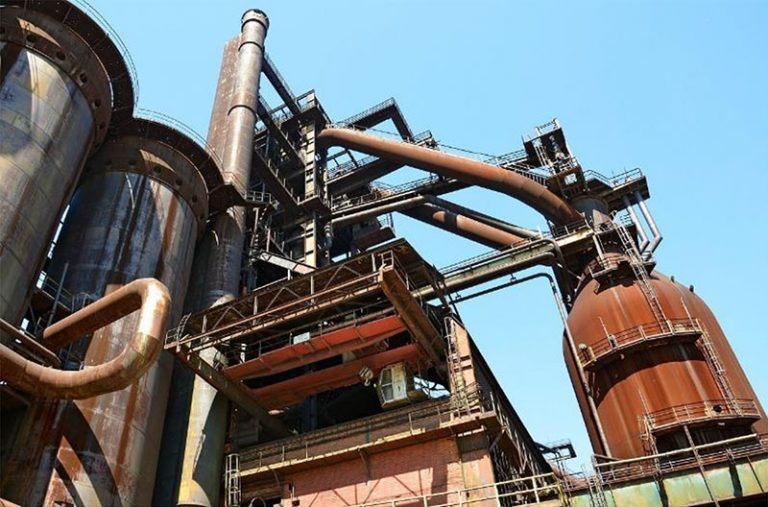There are only three things in life that are certain: death, taxes, and the imminent threat of global extinction of life on Earth as we know it due to the environmental damages caused to the climate by none other than humans ourselves. Thankfully, as a global collective, mankind has the conscience to keep the certainties limited to only death and taxes, and to avoid said extinction, we as a collective agreed to envision a utopian future where no carbon emissions remain unhandled: the net-zero future.
To envision it is one thing, but to get there is a whole other struggle. We know that carbon emissions are a big deal and that the fossil fuel-reliant energy economy is the eye of the hurricane in this issue. The pursuit of cleaner energy sources has been an ongoing fight for the last few decades, and it is never an easy fight to find balance in the energy trilemma (reliability, affordability, and sustainability). It is a challenge that world economies are striving to achieve, and the ideal goal is to find said balance in the form of renewable energy. We now have a global urgency to converge into net zero, and getting there is a long road called decarbonization.

Figure 1. Energy trilemma
What is decarbonization, and what is the end goal?
There’s no denying that the current landscape of our energy economy is “dirty”. Smothered in the emissions generated by worldwide vehicle exhaust emission, cement & steel manufacture, and largely by coal-fired steam power plants, keeping up this pace will surely lead to an alarming level of global temperature increase, counterproductive to the ambitious 1.5°C target. This effort to reduce – and even remove — greenhouse gas emissions in doing day-to-day operations of multisectoral businesses is called decarbonization, and it is our pathway to achieve our goal, a future with net-zero emissions.
To achieve deep decarbonization and prevent the risk of rising global temperatures, all economic sectors should work together in implementing decarbonization measures. Being the top contributor to energy-related CO2 emissions, the power generation sector in Indonesia held a striking 43% share of the total energy-related CO2 emissions in 2022. Making significant changes to the “dirty” parts of the electricity generation business process yields a big step forward toward our goal, and one seemingly obvious change that could bring a major impact is the accelerated retirement of coal-fired power plants.
As many other things are, this adjustment is easier said than done. Retiring coal-fired power plants would mean that along with shutting down said power plants, we need to find replacements to fill the shoes that coal power plants once wore, and those replacements need to emit a significantly lower amount of carbon emission. The answer that comes to the top of our mind might be the accelerated massive implementation of renewable energy generation, and that’s not entirely wrong, it does produce electricity with no carbon emission produced in the generation process. The issue with massive renewable penetration, however, lies in the relatively high levelized cost of electricity, and the lack of reliability that once was provided by coal power plants. The situation above portrays the two extremes of power generation: the cheap, reliable, but concerningly dirty coal power plants, and the clean, sustainable, but expensive renewable power plants. The inability to radically shift from the current situation to the renewable utopia era calls for a phase in between those two to smoothly transition the energy landscape.
Transitioning the power generation landscape from the “dirty” status quo to a renewable future
Net zero cannot be achieved in a giant leap; strategic incremental steps are needed to make sure that we are moving on the right path towards it. In our previous study, PetroRaya classifies the decarbonization timeframe into three phases: high carbon emissions phase, low carbon emissions phase, and net zero emissions phase. We are now currently in the high carbon emissions phase, trying our hardest to quickly go into the low carbon emissions phase, which is what’s commonly referred to as the energy transition phase. In simple terms, this phase evaluates business operations that are energy-intensive in terms of their carbon emissions rate, then reactive measures are done to act on that. The end goal is the net zero phase where every energy produced yields near-zero to nil emissions, and if they still do, the greenhouse gases generated are removed from the atmosphere.
Jumping straight into the net zero emissions phase is not a possible option, primarily because our energy infrastructure is not yet prepared for such a radical change. The transition from the high carbon emission phase takes time, as it necessitates multiple stakeholders to make essential adjustments to their business models regarding how they generate capital and how they source their energy. A fully carbon-neutral energy ecosystem would require transformation of intersectoral operations, and such massive transformation takes quite some time. To keep moving forward and away from the high carbon emission phase, incremental measures are being taken to advance into the low carbon emission/energy transition phase.
In the energy transition phase, one of the key actions to be done is the large-scale shifting away from coal as feedstock for baseload power plants. Coal, while historically cheap and reliable, exacts a heavy environmental toll. Coal-fired power plants are major contributors to greenhouse gas emissions, emitting over 15.5 billion metric tons of CO2 globally in 2022 alone, a staggering figure that significantly contributes to global warming. Beyond CO2, they also release harmful pollutants such as sulfur dioxide (SO2), nitrogen oxides (NOx), and particulate matter, which have severe health implications and contribute to air pollution. This establishes a dire urgency to consider alternative sources of energy, ones that not only produce fewer emissions but also ensure the reliability of our power grids.
Natural gas’ position in fueling the transition
In our quest for a future with greener power, natural gas emerges as a pivotal player. Being also a type of fossil fuel, natural gas holds an advantageous position through the “green” perspective. If we compare the CO2 emissions of burning natural gas to coal combustion in generating electricity, natural gas burning emits approximately 57% less of CO2 per kWh, promoting a big prospect in massively reducing carbon emissions. Natural gas also holds another advantage over the obviously “greener” renewable energy, taking the higher spot in the reliability scale. The intermittent nature of renewable energy generation puts them at a disadvantage, where gas turbines can have an available factor as high as 90%, allowing them to ensure a stable electricity supply by responding to fluctuations in electricity demand. This reliability factor is critical in facing the challenges in the transition period, where energy storage solutions to support renewables are still costly.
However, it’s important to acknowledge the differing opinions of experts. Some argue that we shouldn’t rely on natural gas as a transition fuel because it can divert attention and investment away from renewables. A study from TransitionZero highlights that the cost of transitioning from coal-to-renewables has decreased very significantly, even lower than that of coal-to-gas, considering the spike in global natural gas/LNG price recently. Then again, this debate is very much dependent on regional context, where renewable energy potential is subject to the geographical conditions of a country. For some, direct coal-to-renewable switch might be more feasible due to limited natural gas supply combined with a supporting environmental landscape, but for the others, the lack of available space for land-consuming renewable power plants to occupy makes the development of new natural gas/LNG infrastructure seem like a more sustainable option in supporting the transition to cleaner power.
Balancing these viewpoints, carbon-neutral natural gas emerges as a potential middle ground. With the emerging advancements in low- and zero-emission technologies such as carbon capture and storage (CCS), emissions along the natural gas value chain can be further reduced to pursue carbon neutrality. Take Canada’s British Columbia LNG production for example, where the extensive electrification in the upstream & downstream processes puts them in the top spot of lowest CO2 emissions per ton in LNG production globally. Establishment of CCS infrastructure and elimination of venting and flaring could further reduce emissions in the upstream process, while increasing efficiency in combustion through cogeneration and improving pipeline quality to reduce leaks can play a part in reducing downstream emissions. Another low-carbon potential is in the development of biogas and biomethane from renewable resources of agricultural waste in countries with high agriculture activity. These approaches offer some hopeful low-carbon potential in debating natural gas’ advantageous position in being part of the transition strategy.
Practical strategies in adapting carbon-neutral natural gas
Standing at the intersection of tradition and innovation, carbon-neutral natural gas offers us a practical bridge toward a cleaner power generation landscape. Strategic steps to implement carbon-neutral natural gas into the energy ecosystem can be taken through accelerated R&D and investment of CCS technologies, renewable energy integration, and energy efficiency enhancements.
Being one of the foremost strategies, widespread adoption of CCS technologies involves capturing CO2 emissions produced during natural gas combustion and safely storing them in depleted oil/gas reservoirs (and saline aquifers) underground, requiring involved parties to conduct proper measurement, reporting, and verification (MRV) measures to determine the compatibility of potential storage sites. We have discussed this procedure in a previous article, linked here. CCS has the potential to offset a substantial portion of emissions from natural gas power plants, significantly reducing their carbon footprint.
Another practical approach is to integrate renewable energy sources with natural gas power plants. This hybridization allows for the utilization of cleaner energy when available. During periods of high renewable energy production, excess power can be used to produce hydrogen or other low-carbon fuels through processes like electrolysis. These fuels can then be blended with natural gas, reducing emissions and enhancing the sustainability of power generation. Another major potential is the sourcing of renewable natural gas itself, produced from agricultural waste like palm kernel shell and rice husk to produce biogas and/or biomethane. We also have discussed the potential for the development of biomethane ecosystem in Indonesia in a previous article, linked here.
Improving the energy efficiency of natural gas power plants is crucial in the transition toward a greener energy landscape. Advanced technologies such as combined cycle gas turbines (CCGT) can enhance power plant efficiency, reducing both fuel consumption and emissions per unit of electricity generated. Energy efficiency measures not only make carbon-neutral natural gas more economically attractive, but also contribute to emissions reduction.
Is carbon-neutral natural gas the answer to ensure a smooth transition to a greener energy landscape?
In our journey to address the urgent challenge of decarbonization and secure a sustainable energy future, carbon-neutral natural gas emerges as an attractive option. As we discussed in earlier sections, the transition from our current reliance on fossil fuels to a renewable energy utopia is a complex and multifaceted task. We face the dilemma of balancing reliability, affordability, and sustainability in our energy trilemma. Accelerated retirement of coal-fired power plants is a vital step, but we need a transitional phase to bridge the gap. Natural gas, particularly in its carbon-neutral forms, offers a compelling middle ground.
The promise of carbon-neutral natural gas is convincing in numbers—significant emissions reductions, reliable generation, and the potential to complement renewables. By integrating strategies such as carbon capture and storage (CCS), renewable natural gas, and energy efficiency measures, we can harness the benefits of natural gas while mitigating its environmental impact. These practical steps form a roadmap to adapt and thrive in a greener energy landscape. While the journey to a carbon-neutral future is challenging, carbon-neutral natural gas can play a pivotal role in ensuring a smooth transition, guiding us toward a more sustainable and environmentally conscious energy ecosystem.
References
Climate Transparency, 2022. Climate Transparency Report: Comparing G20 Climate Action – Indonesia. https://www.climate-transparency.org/wp-content/uploads/2022/10/CT2022-Indonesia-Web.pdf
PetroRaya, 2022. Energy Efficiency Study in Indonesia’s Manufacturing Industry.
International Energy Agency, 2023. CO2 Emissions in 2022. https://iea.blob.core.windows.net/assets/3c8fa115-35c4-4474-b237-1b00424c8844/CO2Emissionsin2022.pdf
U.S. Energy Information Administration, 2022. How much carbon dioxide is produced per kilowatthour of U.S. electricity generation? United States of America. https://www.eia.gov/tools/faqs/faq.php?id=74&t=11
TransitionZero, 2022. Fuel Switching 2.0: Carbon Price Index for Coal-to-Clean Electricity. https://www.transitionzero.org/insights/fuel-switching-coal-to-clean




